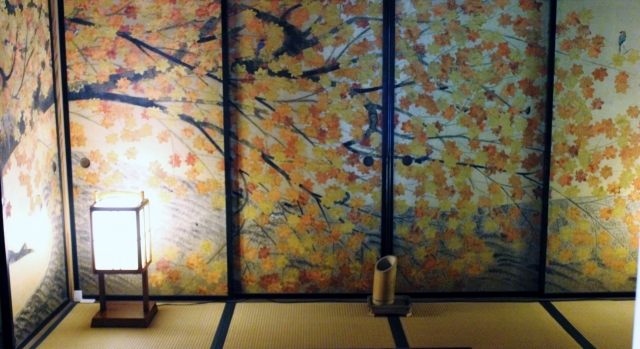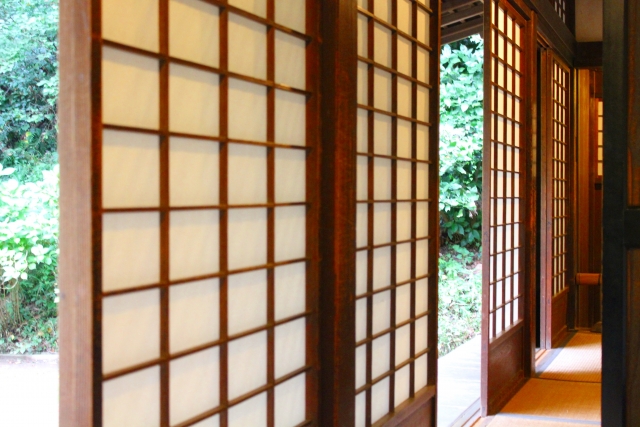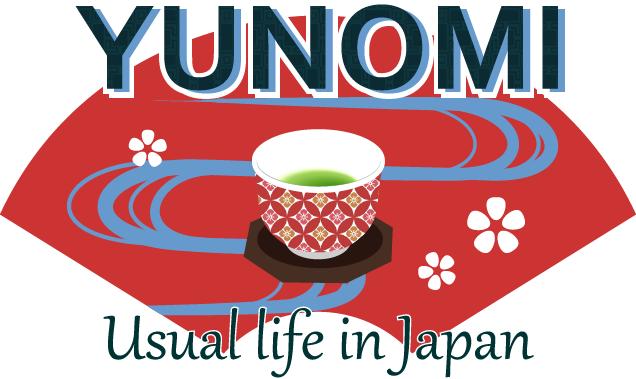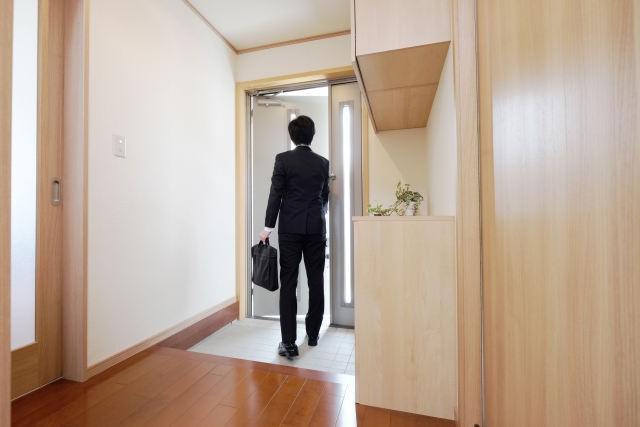Japanese traditional houses normally have sliding doors for the entrance and rooms. But in modern housing, swing doors are dominant and the sliding doors are only to be seen for Japanese style rooms which most of the modern house still contains one or two within.
In western countries, the doors open inwardly. On the contrary, they open outwardly in Japan.
The reason could be that since Japanese has a custom of taking the shoes off when stepped inside the entrance door, a certain space to take off the shoes and keep them must be secured there. Besides, the movement of the door should not swipe them.
Such opening is reasonable in dealing with rainy or stormy weather as well.
When the door opens outwardly it’s less likely to invite dust and rain inside the house.
Talking about the sliding doors that are used for Japanese room, there are two types; Fusuma and Shoji. The difference of the two is the structure and the appearance.
Fusuma

Fusuma is a panel that has a substructure made of wooden lattice over which thick paper adhered. The choice of covering paper influences the atmosphere of the room.
In the history of Japanese art, the painting on Fusuma was an established form of art. There are a number of masterpieces preserved to date.
Attraction of fusuma
Fusuma has been used for dividing rooms from long ago.
Japanese traditional paper "Washi" is used, there is a property to adjust temperature and humidity.
Because it also has thermal insulation, it protects from the cold in winter and from the heat in the summer.
Furthermore, it has a function of releasing moisture when it is dry.
It is because the fusuma has been popular since long ago in Japan with four seasons because it was suitable for that climate.
Shoji

Shoji has a visible wooden lattice structure one side of which a sheet of paper is adhered to. The paper is usually white and translucent to allow natural light to penetrate the room. Therefore, Shoji usually stands against windows while Fusuma is much used to divide or redefine the room.
Attraction of Shoji
Washi used for shoji is excellent in breathability.
It will naturally air purify to allow air to pass freely.
Because it also has hygroscopicity, it prevents moisture from accumulating in the room.
It is also excellent in heat retention, and like "Fusuma", it is suitable for the climate of Japan.
Shoji is not a direct light of sunlight, but it creates natural brightness that people feel comfortable with.
It can be said that this is the reason why Shoji is loved by Japanese people.
These two along with Tatami are the essential component for Japanese style room.

